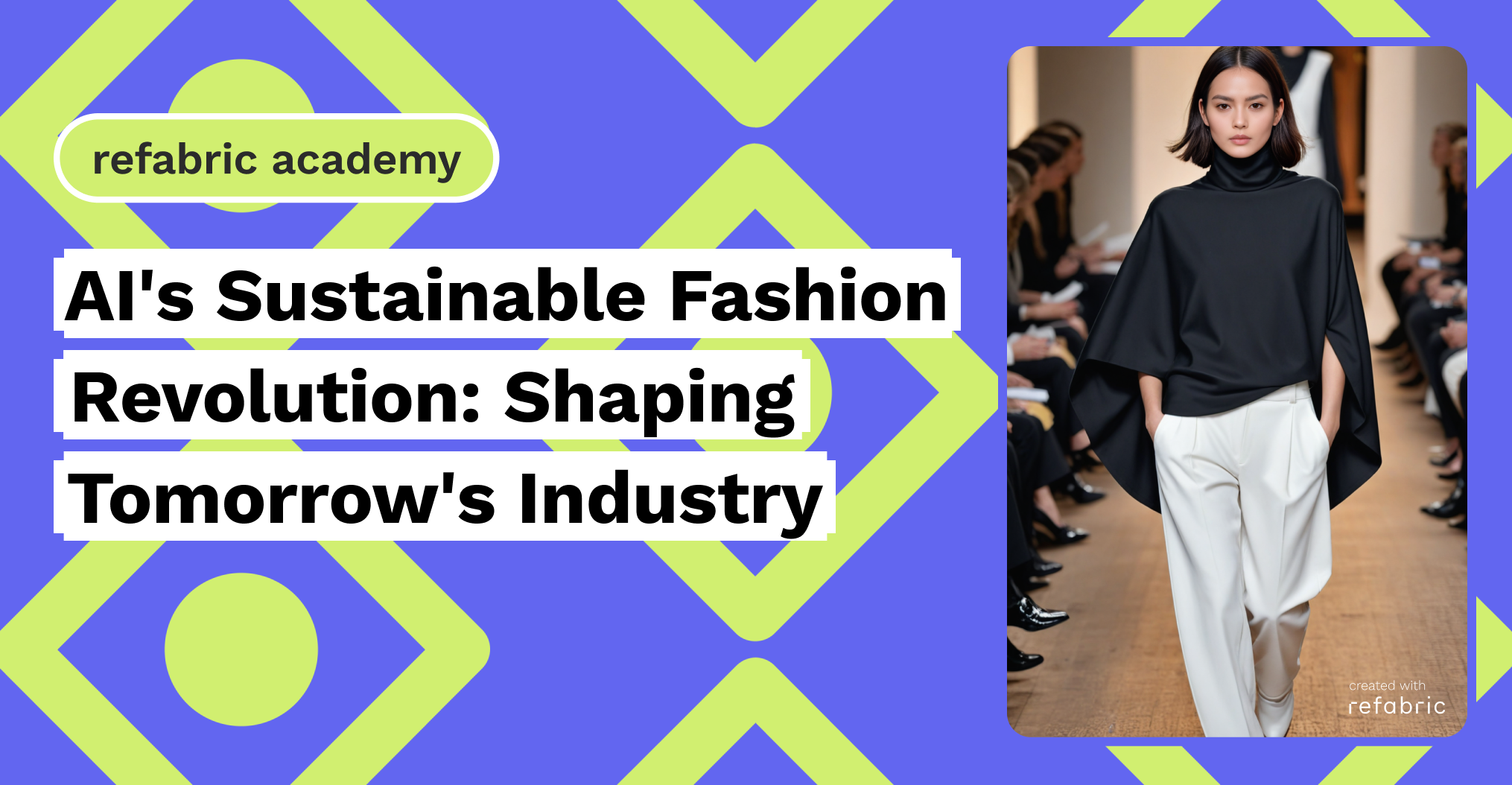Waste in the fashion industry has captured widespread attention in recent years, extending beyond the confines of the sector. Brands have adopted new technologies, launched various campaigns, and generated awareness of the issue and their efforts to combat it. And now, a potential game changer has emerged: artificial intelligence (AI). AI holds promise in mitigating waste across the fashion supply chain, affecting designers to end consumers. Before delving into AI’s pivotal role in waste reduction, let’s explore 10 critical facts regarding fashion waste.
- 92 million tonnes of textiles waste is generated annually: Out of the 100 billion garments manufactured each year, 92 million tonnes are disposed of in landfills.
- Global emissions from the apparel industry are set to rise by 50% by 2030: Without interventions to curb fast fashion waste, the industry’s global emissions are anticipated to double by the end of the decade.
- The average US consumer discards 81.5lbs of clothing annually: In the United States alone, approximately 11.3 million tons of textile waste find their way to landfills every year.
- The usage lifespan of garments has decreased by about 36% over the past 15 years: Currently, many garments are worn only seven to ten times before being discarded, marking a decline of more than 35% in the past 15 years.
- The fashion industry contributes to 20% of global wastewater: Dyeing, finishing, yarn preparation, and fiber production significantly contribute to water pollution and CO2 emissions.
- 20,000 liters of water is required to produce one kilogram of cotton: Fast fashion results in considerable water wastage, with approximately 2,700 liters needed to manufacture a single t-shirt.
- $500 billion is lost annually due to under-utilization and inadequate recycling of clothing: Only 12% of clothing material globally is recycled, leading to substantial economic and environmental losses.
- Almost 10% of microplastics in the ocean come from textiles every year: Materials like nylon and polyester, which are prevalent in garments, shed microplastics during washing, adding to oceanic pollution.
- 2.6 million tonnes of returned clothing ended up in US landfills in 2020: The majority of returned items are discarded due to the higher costs associated with returning them to circulation.
- Fast fashion brands are now producing double the amount of clothing compared to 2000: This surge in production exacerbates pre- and post-production textile waste, with a significant portion of fabric being wasted during manufacturing and many garments being discarded just a few years after production.
How Will AI Play a Significant Role in Reducing and Managing Waste?
AI has the potential to address key sources of waste in the fashion industry and be a pivotal ally for sustainability. Let’s explore AI’s solutions from the viewpoints of designers, manufacturers, and end consumers…

AI-Powered Fashion Trend Analysis and Managing Demand
Unlocking the potential of generative AI presents a prime opportunity to intelligently manage supply, demand, and product life-cycle in the fashion industry. Evidence indicates that up to 40% of fast fashion items remain unsold, posing significant environmental and financial risks. While forecasting trends and consumer tastes has improved, AI can enhance predictions to align production with actual demand, thereby reducing excess inventory.
Fashion forecasters previously relied on qualitative methods, but now AI tools analyze diverse datasets like runway images and social media posts for quicker trend identification. For example, Heuritech in Paris and Trendalytics in New York utilize AI to provide up-to-date trend analysis, assisting fashion brands and retailers in maximizing sales and promoting sustainability by avoiding out-of-trend production.
Reducing returns
E-commerce returns cost the industry $101 billion annually, with significant environmental and financial impacts. AI offers sophisticated size and style recommendations, reducing returns due to style and fit misalignment. Brands can also harness data to provide precise sizing options, enhancing the availability of tailored exchange solutions.
Virtual Fitting Rooms and Size Optimization
If you’ve ever experienced the disappointment of online shopping, where reality doesn’t quite match expectations, you’re not alone. 42% of online shoppers feel excluded due to the absence of representation in model images, while 59% express disappointment when purchased items don’t meet their expectations.
Here’s the good news: Combining AI with fashion size optimization can put an end to the frustration of finding the perfect fit. Advanced algorithms analyze vast datasets, delivering bespoke size recommendations and revolutionizing the shopping experience. For consumers, as mentioned earlier, it reduces the frustration of finding the perfect fit, while brands benefit from anticipating demand more accurately and building customer loyalty.
For some examples, let’s consider Nike Fit, which utilizes AI to suggest shoe sizes by scanning users’ feet via smartphone cameras. Additionally, Google’s AI-powered virtual try-on for Google Shopping addresses sizing issues by offering over 40 diverse models, catering to various body shapes and skin tones.
Meet Gen-AI Refabric Pro
After exploring sustainability in the fashion world, let’s introduce you to Refabric. This innovative generative AI-powered software is poised to revolutionize the fashion industry cycle, from ideation and research to design. Unlike one-off projects, Refabric offers enduring benefits throughout the fashion value chain.
Refabric Pro tackles the waste issue in fashion by addressing two key contributors: overlooking customer demand before production and the inability to evaluate designs pre-production. By enabling realistic visualization of collection pieces on AI models before prototyping, Refabric Pro facilitates the identification and elimination of unwanted products early on. This proactive approach streamlines prototype production, enhances resource efficiency, and minimizes waste. Refabric Pro spearheads sustainability efforts in fashion, paving the path towards a more environmentally conscious and socially responsible future.
